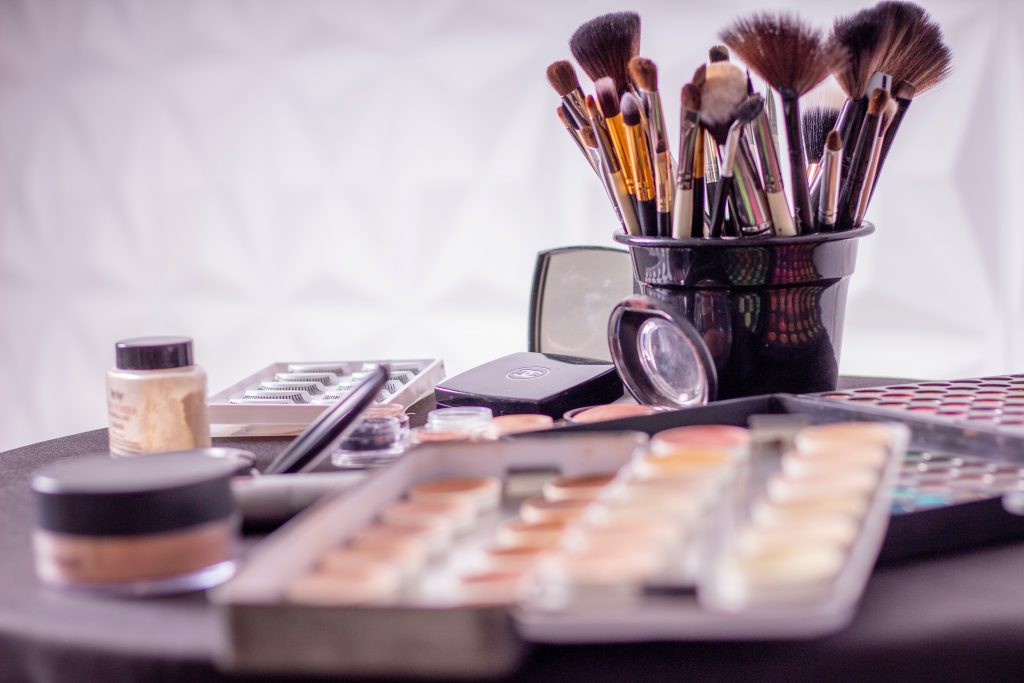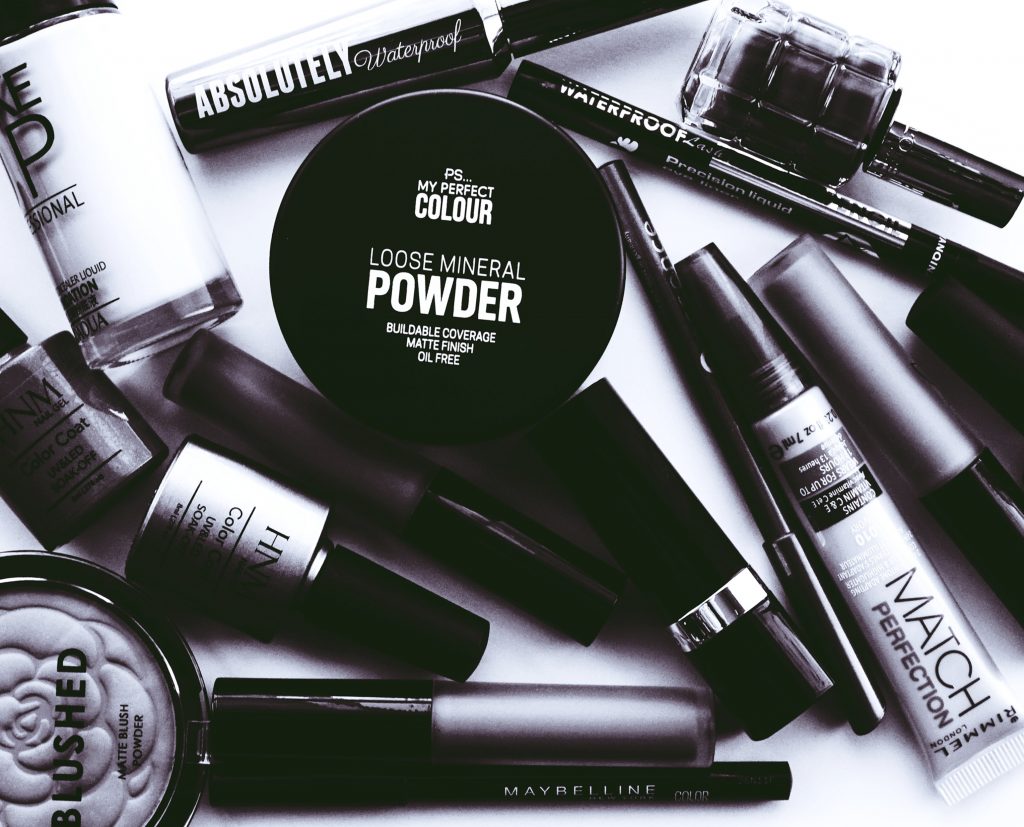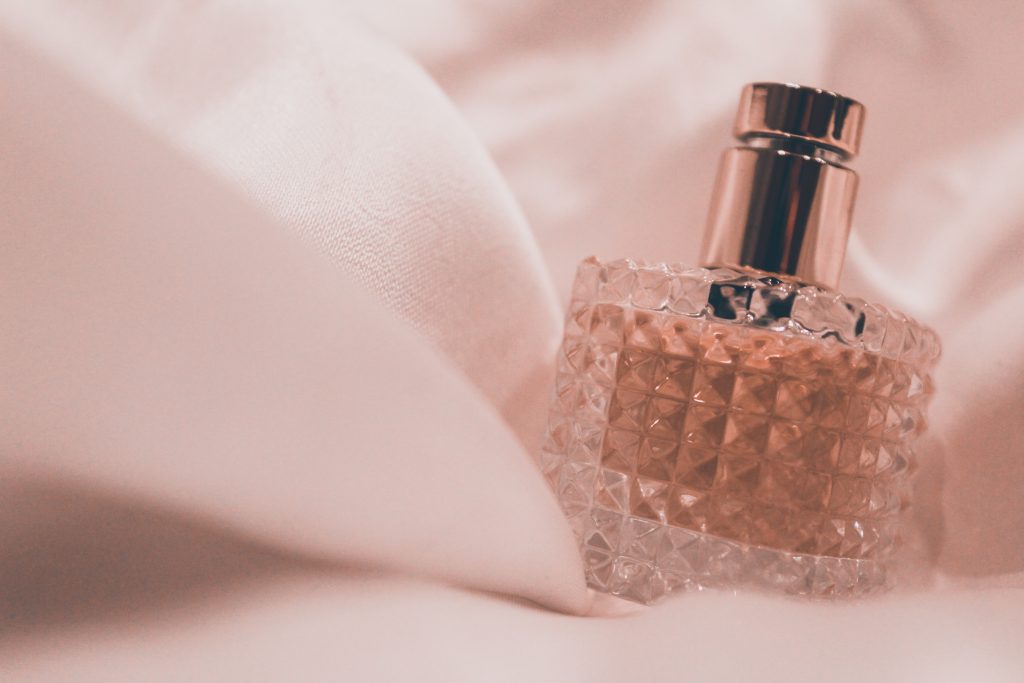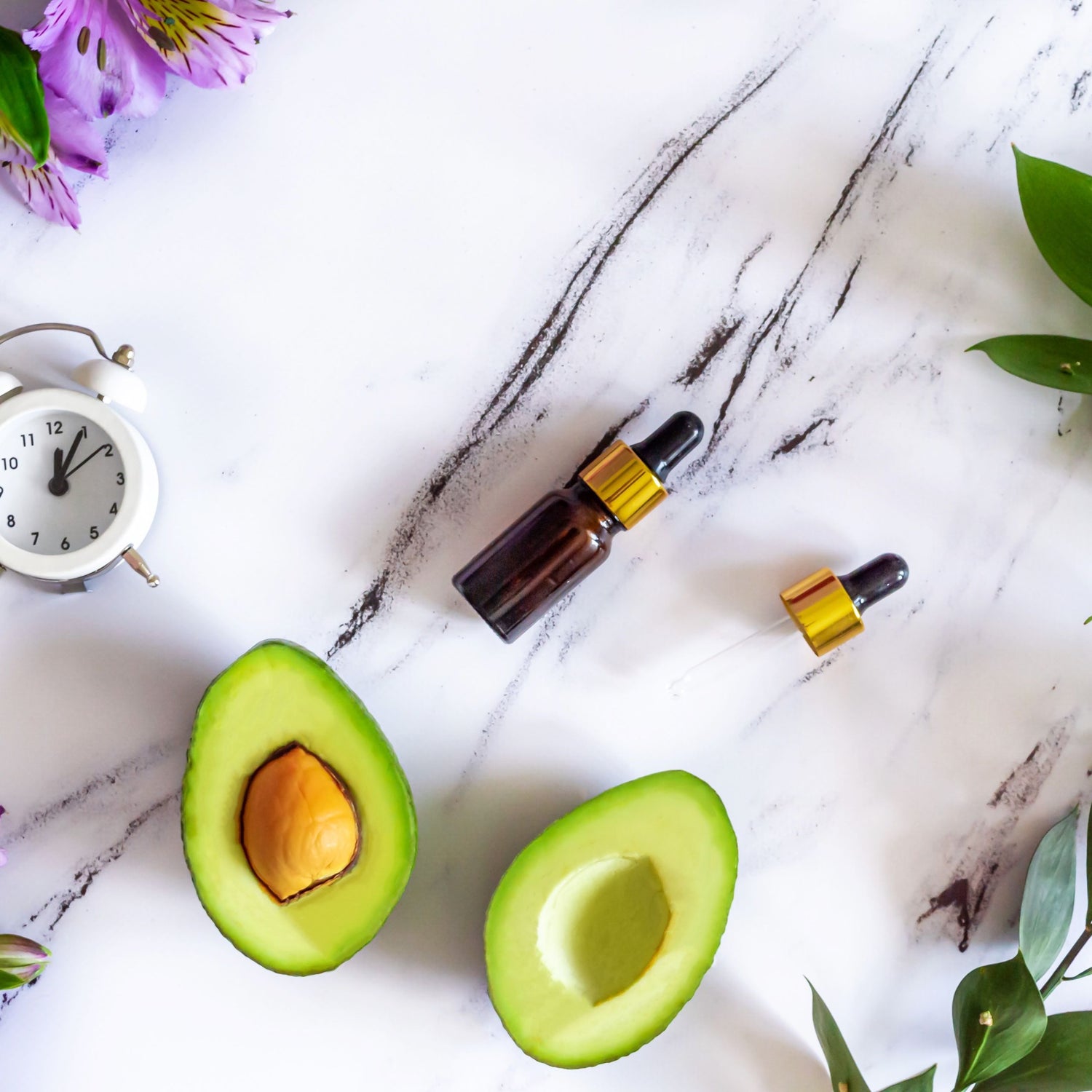
Makeup and other beauty products often contain potentially dangerous chemicals that can lead to severe long-term health effects
Here at Dr.Ugro™, we are profoundly aware of these risks. It is our hope that by bringing greater awareness and education to these issues, safer beauty and personal care products can become the new norm.
Harmful Ingredients in Cosmetics and Beauty Products, Dubbed The Other Inconvenient Truth
"Most consumers would be shocked to learn that cosmetics companies can put just about any chemical in cosmetics, no matter how dangerous. “ - Environmental Working Group President Ken Cook.
Our skin tends to absorb 60% of what we put on it, according to beauty chemist, David Pollock. And the chemicals which comprise the beauty products we buy can accumulate in our fatty tissue. Many of them are considered to be endocrine disruptors, carcinogens, and poisons capable of contributing to reproductive issues and even pre-term births.
A world-renowned epidemiologist named Dr. Daniel Craner managed to find supportive evidence between ovarian cancer and the baby powder manufactured by Johnson and Johnson. In 2017, the New York Times reported that 4,800 women were suing the company due to their development of this cancer type, having been long-time users of the powder.
In 2004, a scientist from the UK, named Dr. Philippa Darbre found alarming levels of parabens in breast tissue. (1). A 2018 study by the National Institute of Health revealed a link between breast cancer and personal care products. (2). It may be no surprise that women like, Mymy Nguyen, a medical student and beauty enthusiast developed a breast tumor. She conducted her own experiment to measure and compare her body’s chemical levels when she used common versus clean beauty products and found startling differences. Her story is featured in the documentary, Toxic Beauty.

The issue of harmful ingredients in cosmetics and beauty products can no longer be ignored
In general, artificial chemicals are often used to serve three basic roles as preservatives, emulsifiers, and fragrances. Here is a summary of each of these categories.
Synthetic Preservatives In Cosmetics As Toxins in Beauty Products
Preservatives prevent products from becoming rancid due to mold, fungus, and bacteria.
Parabens are a common type of synthetic preservative used. However, they have been known to mimic estrogens in the body, causing disruptions to hormonal, development, metabolism, and even neurological functioning. Examples of parabens include:
- methylparaben
- butylparaben
- ethylparaben
- propylparaben
A second widely used group of synthetic preservatives are chemical compounds that release formaldehyde. These include:
- DMDMH
- bromopol
- glyoxal
Although they help improve shelf life, the downside is that they will continue to release formaldehyde, causing products to become more toxic and dangerous over time.
Emulsifiers
Emulsifiers help keep different ingredients from separating into layers and to produce smooth and even consistency in the final product.
However, many commonly used emulsifiers have the tendency to remain on the skin’s surface and cause dryness due to their tendency to remove protective layers of natural oil.
A dangerous byproduct of synthetic emulsifiers is 1,4 dioxane which is regarded as a carcinogen by the Environmental Protection Agency.
This high-risk compound is associated with the following list of ingredients:
- Polyoxyethylene
- Polyethylene glycol (PEG)
- Polyethylene
Consumers should also pay attention to any ingredient ending in “oxynol” or “eth”
Toxins in Beauty Products in the Form of Fragrances

Many perfumes are made with artificial chemicals that are now known to be toxins in beauty products
Studies suggest that the fragrance component of personal care products is frequently linked to allergic reactions. Additionally, scent-based toxins in beauty products may be responsible for other adverse reactions such as:
- contact dermatitis
- headaches
- wheezing
- airway irritation
- mucosal irritation
Why Risky Chemicals Have Been Allowed in Beauty Products

Federal lawmakers have only just started to scratch the surface in terms of protecting consumers against harmful ingredients found in cosmetics and beauty products
Most consumers assume that some type of organization or governance has been overseeing the products that we buy to prevent toxins in beauty products and ensure our safety and well-being. We think to ourselves, the more well-known the brand, the more regulations they must have passed. And surely, they would have stopped them along the way, if their products were not safe, right? Well, not quite.
The truth is that the cosmetics industry has largely regulated itself for more than a century.
Currently, the federal regulations on cosmetic beauty products have not been upgraded since the 1930s. Due to growing health concerns supported by mounting research findings, the FDA has only now just started investigating into the safety and manufacturing practices of cosmetic companies with its first inquiry in 2018. While Congress has sought to implement more oversight on the manufacturing of cosmetic and personal care products through the Personal Care Products Safety Act and the FDA Cosmetic Safety Act in 2017, these bills have yet to pass as formal legislation.
Natural, Plant-Derived Compounds As A Better Alternative to Synthetic Chemicals

Dr.UGro believes in using natural alternatives for synthetic toxins in beauty products
At Dr.UGro™, we realize the inherent risks of artificial chemicals and toxic metals in our personal grooming and cosmetic products. In our fervent desire to pave the way for safer, healthier alternatives, we have worked painstakingly to craft a set of genuinely all-natural, and effective personal care items.
Our philosophy is that nature herself holds the solutions to all our health, healing, and beauty needs. For just about every lock, there is a key that fits.
We just have to discover these answers for ourselves. There is an inherent intelligence and order behind all the tangible components within our natural ecosystem.

Nature carries alternatives to synthetic preservatives in cosmetics as well as other types of toxins in beauty products
According to Dr. Andrew Weil, plants with medicinal value often contain multiple variations of the same chemical compound. And through the process of evolution, a specific variation of a molecule gets selected so that it becomes present in higher levels, with the ability to exert potent changes on our bodies (i.e., the active principle). The other variations continue to exist, often exerting an opposite effect.
Our bodies determine which variations we need, not just to heal and restore a healthy state of balance. This is achieved by making specific receptors available for medicinal components from the plant to bind to.
Synthetic chemicals are usually modeled after molecules found in plants known as the active agent. However, isolating them for treatment purposes as single-agent constituents only works to push the body in one direction. Without the opposite and neutralizing agents found in the whole plant, there is an enhanced risk of creating an imbalance in our system and also a greater context for disease to develop.
While some synthetic chemicals are intended for medical or treatment purposes, others are intended to be used as preservatives, colorants, thickeners, emulsifiers (to keep liquids from separating), and fragrances. For the most part, they have only been assumed to be safe as a result of partial testing that does not account for long-term effects. Also, many dangerous chemicals have been deemed as harmless, in small enough quantities. However, through regular, long-term use, these tiny quantities often exert a cumulative effect on the body.
The lack of tight regulation along with the permissiveness of these lenient standards are two of the major reasons why risky chemicals exist in our beauty and personal care products.
Unfortunately, we are now just starting to awaken to their detrimental effects through research studies, and an increasing number of real-life stories, like the ones described earlier.
We don’t have to continue along the dangerous path of relying on artificial chemicals. At Dr.UGro™ we believe that a better and safer route is to seek new answers from nature, which is intrinsically designed with our well-being in mind. We just have to learn how to properly navigate and harness its potential.

Both men and women can benefit from avoiding toxins in beauty and personal grooming products
With these ideals at the forefront of our work, we were inspired to embark on the quest of crafting a line of hair beauty products that could truly be considered all-natural. And most importantly we made sure that they really work to soften, condition, and improve the overall health of the hair from within.
All of our ingredients are plant-derived. There was also no need for us to test on animals. Furthermore, we also succeeded in finding effective natural alternatives to synthetic chemicals to preserve, fragrance and emulsify our final end products. Our ingredients have not only been used since the time of our ancestors, but each one has also been studied for effectiveness through controlled experiments.
Also, at Dr.UGro™ we realize how important it is to preserve the original vitality and integrity of the whole plant. This is why we use cold mechanical presses to extract our essences. Also, we omit heat above room temperature to prevent destroying the plant’s bio-active properties.
We really hope that the lessons and insights we’ve acquired along our journey will be useful to other conscious beauty and personal care brands who are incorporating natural and safer alternatives to synthetic chemicals in their products.
Defining What Really Constitutes A Natural Beauty Product
Through the proper selection and processing of botanicals, natural, plant-derived ingredients can be made into much safer product options, compared to their synthetic counterparts.
However, the rising demand for natural beauty and personal care items brings about a new challenge. The use of the term natural is neither defined nor regulated by the FDA. Products can be sold as being natural just using single plant-derived ingredient amidst artificial and synthetic additives.
The concept we have for what a natural product should be is not always met by manufacturers. And consumers can easily be misled by package labeling.
Although natural products are not regulated, there are well-established organizations dedicated to bringing safe, consciously-made, high integrity products to consumers. This requires defining ingredients as well as processes that constitute safety, efficacy for cleaner, and more natural personal care products.
Criteria for Natural Products According to the National Products Association

The concept of natural is appealing to many, but needs to be more specifically defined for creating quality beauty, health and personal care products
An organization called the National Products Association (NPA) has adopted the mission of enabling “a broader, more accessible marketplace” for products that stay true to the concept of what natural products should be. Their objective is for customers around the world to have easier access to these items while working to secure the rights of suppliers to actually sell these types of goods.
Their efforts are largely based on providing specific definitions and criteria that uphold the vision that consumers have in mind when purchasing these natural products. In short, natural ingredients must come from renewable forms of flora, fauna, or minerals, as opposed to petroleum.
NPA certified products can only use synthetic chemical ingredients which have been approved by the organization. These are allowed only if there is no corresponding natural option or if the ingredient carries no risks to human health, as supported by third-party scientific publications which have been peer-reviewed.
- Products which meet NPA guidelines must contain 95% natural ingredients. This excludes water
- Petroleum and synthetic silicone are not permitted, among other ingredients
- Also, all NPA-approved products must fully and transparently disclose their full list of ingredients
NPA Prohibited Ingredients
The National Products Association has compiled a comprehensive list of prohibited ingredients which are potentially health risks for humans, according to third-party, peer-reviewed research studies. A partial set includes the following:
- sodium lauryl sulfate: commonly used in commercial cleansing products which often removes the natural oil/lipid outer layer of the skin
- parabens: synthetic forms of preservatives which can disrupt the endocrine system
- paraffin, mineral oil, and petroleum: sourced from non-renewable resources and often contain toxic impurities
- synthetic chemical sunscreens: can potentially damage and disrupt the human hormone equilibrium
A comprehensive list of ingredients that are banned by the Natural Products Association is available here.
In our efforts to follow the standards and guidelines set forth by the NPA, Dr.UGro™ products completely avoid the inclusion of these ingredients, using completely all-natural options to perform the functions offered by these factors.
Ingredients Allowed by the NPA
In addition to their list of prohibited ingredients, the NPA has also created a comprehensive “positive” list of over 800 allowable ingredients. Each included item adheres to the NPA Natural Standard definition of the word natural.
The NPA defines natural products as being minimally processed without synthetic or artificial ingredients. Also, in their aim to provide safe, the organization has provided a list of prohibited, toxic ingredients as well as processes.
Product Manufacturing Processes Allowed by the NPA
The quality of a truly natural product is not only determined by what ingredients are used, but also how they were processed. This factor is extremely important for the prevention of harmful bi-products that some processing methods can generate.
The NPA has specified an entire list of allowed processes for their certified products. This includes:
- cold pressing botanical fragments
- acquiring essential oils and other extracts from plants
- converting waxes to oils
- hydrolyzing (breaking down proteins into amino acids or peptides)
Whole Foods Standards For Body Care

Better natural standards in beauty and personal care require defining which synthetic ingredient to avoid
Besides the criteria defined by the National Products Association, consumers may also find the quality standards provided by Whole Foods to be another informative resource for choosing safer, cleaner personal care items. Whole Foods has compiled a list of prohibited ingredients based on their belief that what you put on your body should be taken as seriously as the nutritional supplements you take.
Here at Dr.UGro, we have chosen to abide by the guidelines specified by both the National Products Association as well as Whole Foods Market to create products according to the highest standards for naturalness, safety, and the integrity of the earth and its inhabitants. As natural is now becoming the new black in the world of beauty and grooming. We will continue to provide quality education on these topics.
Frequently Asked Questions
What are some examples of effective natural preservatives that can be included to avoid toxins in beauty products
There are many plant-based ingredients that have antimicrobial properties. One example is cedarwood oil. Others include lemongrass oil, olive leaf oil, fenugreek extract, thyme oil, neem rosemary, and eugenol oil.
Is there really such a thing as a natural emulsifier for beauty products?
Yes, there are compounds that are derived from all-natural sources like bio-based propanediol which comes from corn as well as glyceryl oleate, made from glyceryl and vegetable oil. Both serve as effective emulsifiers.
References
- Darbre PD1, Aljarrah A, Miller WR, Coldham NG, Sauer MJ, Pope GS. Concentrations of parabens in human breast tumors. J Appl Toxicol. 2004 Jan-Feb;24(1):5-13.
- Taylor KW, Troester MA, Herring AH3,4, Engel LS2, Nichols HB2, Sandler DP5, Baird DD5. Associations between Personal Care Product Use Patterns and Breast Cancer Risk among White and Black Women in the Sister Study. Environ Health Perspect. 2018 Feb 21;126(2):027011. doi: 10.1289/EHP1480.




